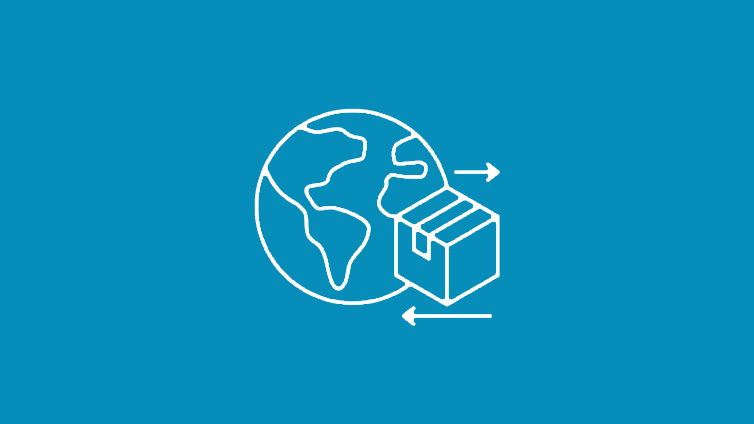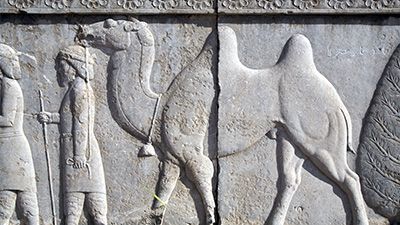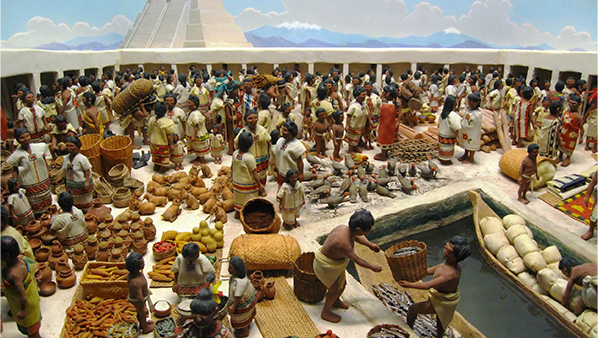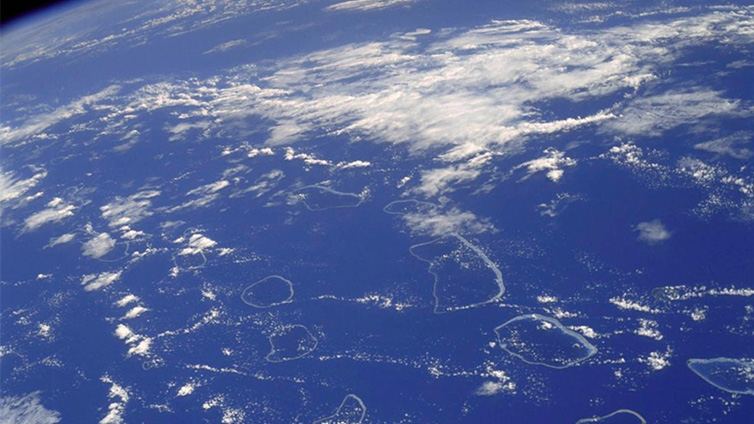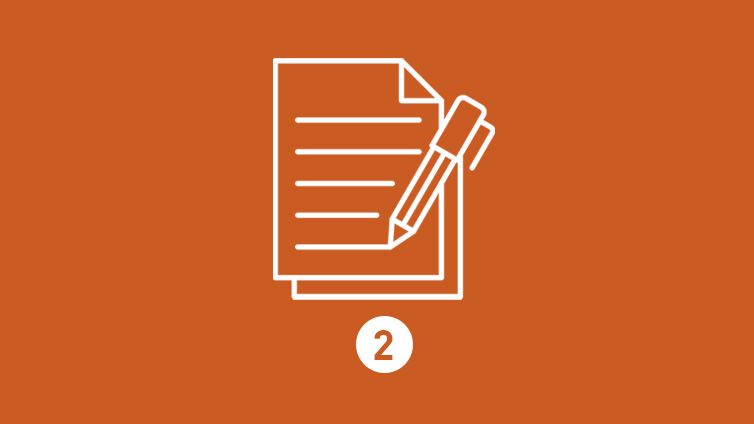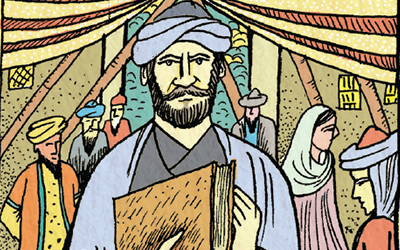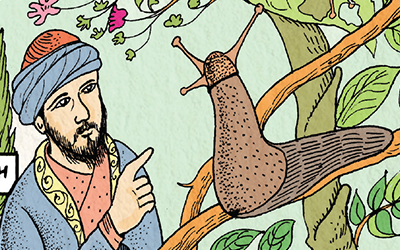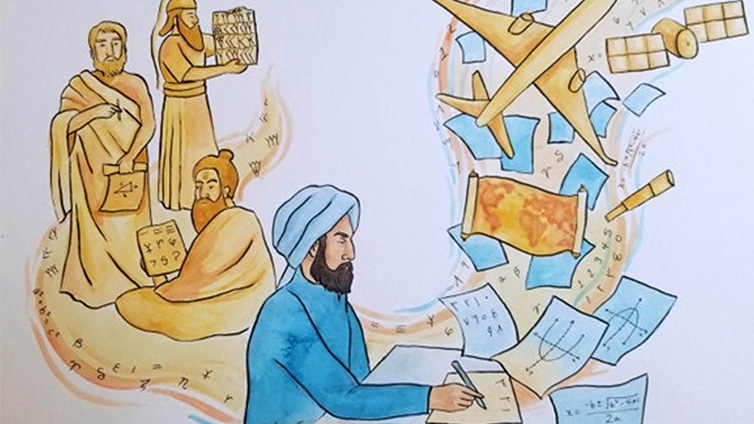Expanding Connections
Driving Question: How did long-distance connections increase complexity?
People have traded goods and ideas for thousands of years. Once large societies and empires formed, trade routes expanded. But what else was traded as connections crossed longer distances?
Learning Objectives:
- Analyze the expansion and interconnection of complex societies.
- Identify how physical systems impact human systems.
- Explain how new networks of exchange accelerated collective learning and innovation.
Vocab Terms:
- belief system
- culture
- disease
- empire
- military
- tax
- trade
Opener: Expanding Connections
To teach this lesson step, refer to page 2 of the Lesson 5.5 Teaching Guide.
Both foragers and early farmers trekked miles over land and sea to exchange goods, people, and ideas. But what happened when these trade routes expanded to cross deserts and oceans?
Making Connections
To teach this lesson step, refer to page 3 of the Lesson 5.5 Teaching Guide.
Looking to differentiate, modify or adapt this assignment? Check out our Differentiation Guide.
In nature, there is arguably as much cooperation as there is competition. The same thing is true of human societies. This slideshow and activity explain how one form of cooperation, trade, shaped the cultures it connected.
-
Guiding Questions
-
Before you watch
Preview the questions below, and then review the transcript.
While you watch
Look for answers to these questions:
- Why did collective learning speed up during the agrarian era?
- How did new communication and transportation innovations help collective learning?
- How did the diseases that traveled along the Silk Road and Indian Ocean routes both hurt and help people?
- How were the hub zones in the Americas different from those in Afro-Eurasia?
After you watch
Respond to this question: Why do you think that collective learning speeds up in areas with large, diverse populations?
Key Ideas
How Did Cultures Connect?
Connecting Across Distances
To teach this lesson step, refer to page 5 of the Lesson 5.5 Teaching Guide.
It’s a big world out there, and you really get a sense of that by following how goods travel across trade networks. These next materials dig into how and why distant societies interacted with each other.
-
Guiding Questions
-
Before you read
Preview the questions below, and then skim the article. Be sure to look at the section headings and any images.
While you read
Look for answers to these questions:
- What is the Silk Road?
- How did the rise of big states impact trade
- What types of goods traveled along the Silk Routes
- How did trade along the Silk Routes increase complexity?
After you read
Respond to this question: How can we still see the effects of the Silk Routes in the world today?
-
Guiding Questions
-
Before you read
Preview the questions below, and then skim the article. Be sure to look at the section headings and any images.
While you read
Look for answers to these questions:
- How do we know about the trade routes in the Americas during this era?
- What trade challenges existed in the Americas at this time?
- Why was Teotihuacan an important city for trade?
- How do we know that trade was important to the people living in Tenochtitlán?
- What were some of the other places in the Americas that had large trade networks?
After you read
Respond to this question: What do you think happened to the trade networks in the Americas after the arrival of Europeans in the late 1400s?
-
Guiding Questions
-
Before you read
Preview the questions below, and then skim the article. Be sure to look at the section headings and any images.
While you read
Look for answers to these questions:
- What materials did Polynesians use to build their boats?
- Where did the ancestors of the oldest inhabitants of Oceania come from?
- What areas did Polynesians settle?
- How did Polynesian wayfinders navigate from island to island?
- Why do scholars think the people of Oceania set off to find new islands to settle?
After you read
Respond to this question: Why is it important to combine oral tradition and science to understand the early history of Oceania?
Closer: Expanding Connections
To teach this lesson step, refer to page 8 of the Lesson 5.5 Teaching Guide.
Our Writing Guide shares our approach to both formal and informal writing, including Unit Notebooks—check it out!
Your Unit Notebook has been a steady friend to you throughout the course so far! It’s time to update it with some of the essential things you’ve learned.
Exploring Interconnection
To teach this lesson step, refer to page 8 of the Lesson 5.5 Teaching Guide.
Comics in the classroom? Check out our Graphic Biographies Lesson Plan for guidance on using Graphic Biographies.
As people connected across vast distances, they shared knowledge and ideas that changed the world.
-
Guiding Questions
-
Before you read
Preview the questions below, and then skim the comic, paying attention to things like prominent colors, shapes, and types of text and fonts. How do you know where to start and in which direction to read? What’s in the gutters (the space between panels)? Who or what is the focus of the comic?
While you read
Look for answers to these questions:
- What happened in Ibn Khaldun’s political career that affected his work as a scholar?
- Why was the Muqaddimah important?
- What does Ibn Khaldun say is a key element in society’s functioning?
- Looking at just the images and colors in this graphic biography, what do you think the author and artist are trying to say about societies during this time?
After you read
Respond to this question: How did the work of Ibn Khaldun influence what was known about the rise and fall of societies?
-
Guiding Questions
-
Before you read
Preview the questions below, and then skim the comic, paying attention to things like prominent colors, shapes, and types of text and fonts. How do you know where to start and in which direction to read? What’s in the gutters (the space between panels)? Who or what is the focus of the comic?
While you read
Look for answers to these questions:
- How did Ibn Bassal’s pilgrimage to Mecca contribute to the development of agriculture in Al-Andalus?
- Why was Ibn Bassal’s book Diwan al-Filāḥa (Book of Agriculture) important?
- How did Ibn Bassal improve the efficiency of farming?
- Looking at just the images and colors in this graphic biography, what do you think the author and artist are trying to say about agriculture during this time?
After you read
Respond to this question: What does Ibn Bassal’s story tell you about the way agriculture expanded collective learning?
-
Guiding Questions
-
Before you read
Preview the questions below, and then skim the article. Be sure to look at the section headings and any images.
While you read
Look for answers to these questions:
- What contributions did al-Khwarizmi make?
- Why is algebra important?
- Why was al-Khwarizmi’s adoption of the Hindu numbering system important?
- What was the House of Wisdom?
- Why was the House of Wisdom important?
After you read
Respond to this question: What are some things that you do on a daily basis that were made possible by the work of al-Khwarizmi?
Mysteries of Oceania Migration
Why did it take thousands of years for humans to migrate from East Asia to Pacific Islands like New Zealand? Explore the mysteries of migration in this podcast clip.
Key Ideas
-
Guiding Questions
-
Before you listen
Preview the questions below, and then review the transcript.
While you listen
Look for answers to these questions:
- Where did the people of Oceania—the Austronesians—originally come from?
- For how long did the migration of people throughout the islands of Oceania stop?
- Why does Peter Bellwood think it took so long for migrants to get to the islands of the eastern Pacific like New Zealand, Hawaii, Tahiti, and the Cook Islands?
After you listen
Respond to this question: What types of evidence do you think Peter Bellwood used to figure out where Austronesians began their journey to the islands of the Pacific?













